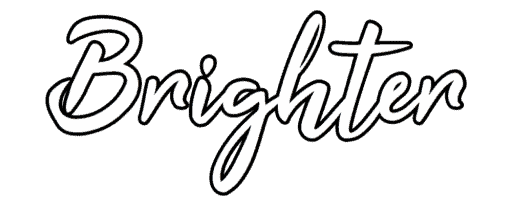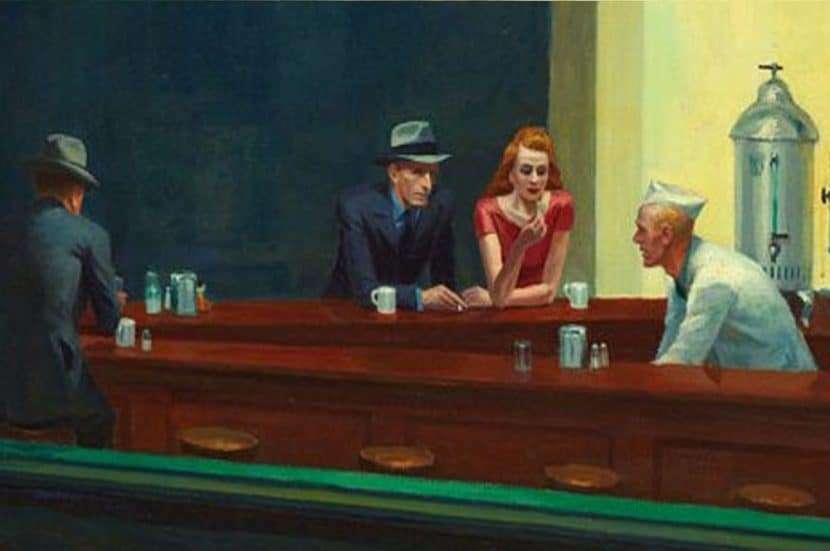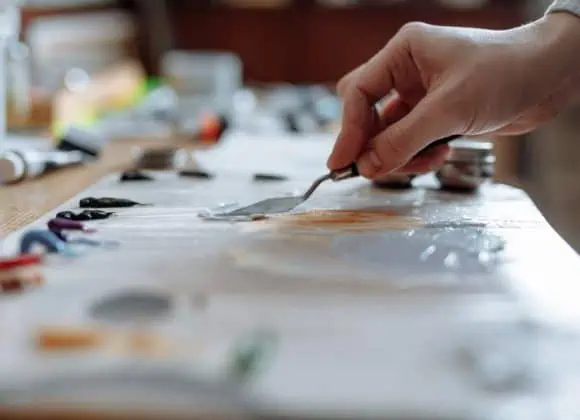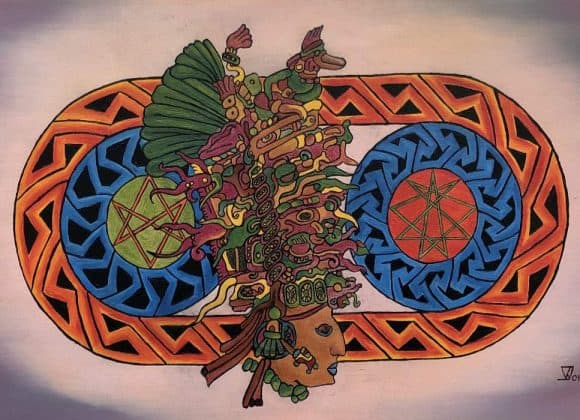Contemporary art is something that is forever changing. Any list of best paintings will always be subjective and I do not apologise for that. I will apologise if I have left out any of your personal favourites. There was always going to be oil paintings that got missed in this short list.
First we need to define the term contemporary art. In basic terms it refers to art ‘Of the present time’. Although this may seem a simple concept each person will have a slightly different idea on when this began.
To many people it is anything that happened after the second world war. To me the easy definition is within a lifetime. So effectively the last 70 or 80 years. Some art historians will describe it as the point where the major art movement of the day changed, but this in itself is problematic.
There is never a specific day or even year when the major art movement of the day changes to the next. There is always a period of crossover from one era to the next. In this case that period would be the end of the ‘Modernist’ art movement which would often be defined as the 60s or 70s.
I will stick to describing the contemporary era as the period from the second world war onwards, i.e. the last 80 years.
Table of Contents
9 Best Contemporary Oil Paintings
Three Studies for Figures at the Base of a Crucifixion by Francis Bacon 1944
1944 was an important year for many reasons. It marked a turning point in the 2nd World War and many other things. For Francis Bacon it marked the destruction of all but a few of his previous paintings. Frustrated by what he saw as an inability to recreate the visions of his mind on canvas in a way that truly depicted the feelings involved in those visions.
His first, and I would argue his best, attempt at capturing those primal feelings was the triptych ‘Three Studies for Figures at the Base of a Crucifixion’. These three oil paintings were designed to shock. They captured those feelings in a primordial way that had simply never been seen before.
The horror these images portrayed wasn’t accepted well by much of the world of traditional art. However, they provoked a reaction from everyone that saw them. The response was often one of alarm and they shocked the sensibility of the art world. There was no denying the brutal intensity that he managed to capture with these paintings and they were impossible to ignore.
These three great oil paintings were Bacon’s interpretation of the Furies of Greek Mythology. Three goddesses of vengeance whose task it was to rain down retribution on people for crimes beyond the realm of human justice.
The deep red of the backgrounds and dark shadows in each painting immediately create an air of something hellish. The grotesque, mutated, semi humanoid forms scream out of each painting in a truly terrifying way.
Perhaps they were a metaphor for the despair and destruction that was apparent by the end of the 2nd World War. Perhaps a representation of the inhumanity of many of the people involved in such a dark period of our history. Some things we will never know. Thought provoking these paintings will always be.

Raphaelesque Head Exploding, by Salvador Dali – 1951
This is one of a number of fragmented heads that Dali painted. The inspiration came from the devastating effect of the Atomic bombs dropped on Hiroshima and Nagasaki at the end of the second world war.
The face itself was inspired by the ‘Madonna‘ by the great Renaissance master Raphael. The background shows the clouds left by the explosion but also forms a halo around the top of the head. In the top of the head you can see the representation of the dome of the Pantheon in Rome but as your eyes move across the painting those clearer shapes turn to amorphous three dimensional shapes that gradually reveal the tender expression on the woman’s face.
The painting is thought provoking and shows exceptional skill. The brushwork is simply staggering and conveys the dismay of a world torn apart by the devastating effects of the war.
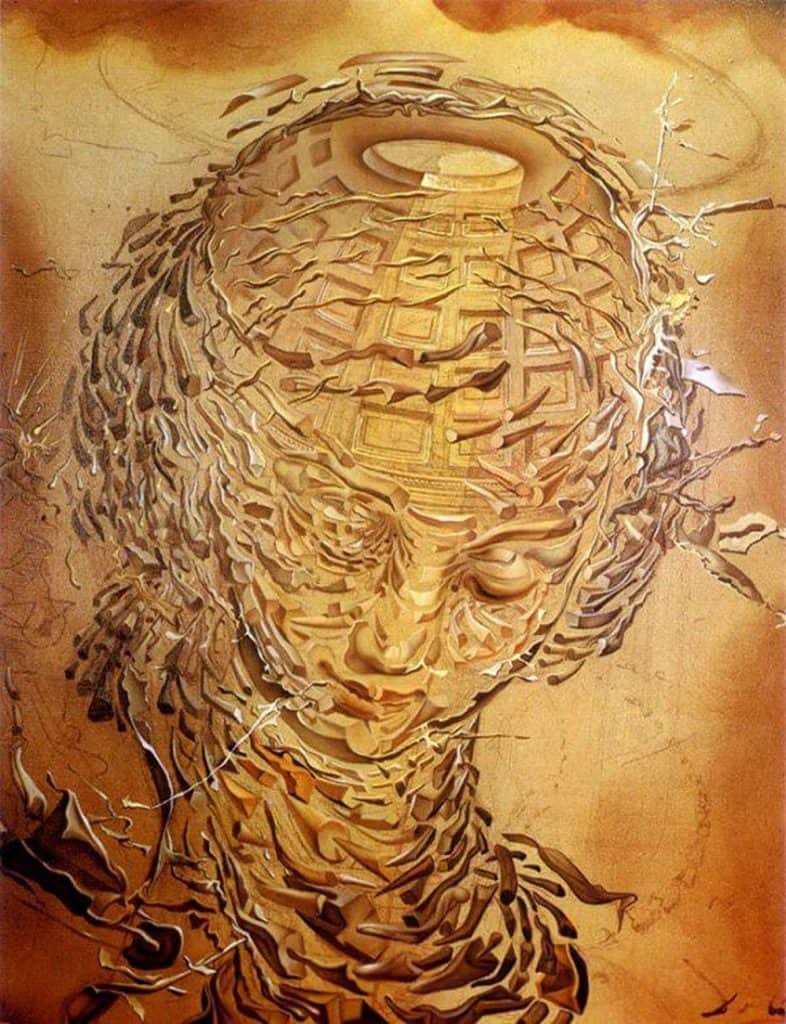
The Blank Signature by René Magritte -1965
Rene Magritte was a master of paradox. He created many impossible illusions and this oil painting is perhaps one of his finest. The painting is illogical and impossible, but totally recognisable too.
What you see is the rider and horse walking serenely through the forest, but look closer and you recognise that the trees, horse, and rider make no sense. Some of the tree trunks although behind other trees somehow are seen as in the foreground, in front of the horse and rider.
Magritte’s intention was to puzzle the mind with impossibilities. The way the rider, horse and trees intertwine creates a fascinating optical illusion. The order of the objects within the painting make the beautifully painted images completely impossible. An object in the foreground suddenly appears to be in the background throughout the painting.
It shows us how our minds can take over and see what it thinks is there rather than what actually is in the painting. The juxtaposition of the various elements of the painting create an air of confusion. At the same time the exquisitely painted pieces themselves are reproduced in a beautifully realistic way that leaves no doubt what they actually are.
You could say that the meaning of the painting is actually nothing to do with the subjects. It is about the baffling way that Magritte has presented the realistic subjects in a totally unrealistic way.

Nighthawks, by Edward Hopper – 1942
Nighthawks by Edward Hopper is a painting that has touched many peoples lives. The late night scene of a simple American diner is complicated by the fact there is no door.
The precise lines and crisp shadows create a sharp focus throughout the painting and Hoppers use of perspective is beautiful. The bright light inside the diner help create depth and the whole painting exudes a feeling of solitude. The characters show little interaction with each other. Each one buried in their own thoughts.
In Hopper’s words “I didn’t paint this to explore loneliness, but unconsciously I guess I was painting the loneliness of a big city”.
It has become one of the most recognisable paintings of the post war era and offers a window into what became everyday life for many Americans.

Diego by Alberto Giacometti – 1959
This painting is a portrait of Giacometti’s younger brother, Diego. It is dark and foreboding. The heavily textured background is scraped into the sharp lines that form the head and shoulders of his brother.
The shrunken appearance of the face perhaps portrays the insignificance of the individual in the aftermath of the world wars. He was close friends with people from the Existentialist movement, who had begun to question the way we as individuals relate to the world around us.
The figure of his brother seems to emerge from the painting like a swimmer breaking the surface of the water. Although smaller, the head is solid in appearance and yet the body is scratched more lightly into the greys of the background which sit heavily on the painting, like murky clouds.

Past Times, Kerry James Marshall -1997
Kerry James Marshal is an American artist who is famous for his figurative paintings of Black American culture and history. In 2017 he was included in the Time Magazine top 100 list of most influential people in the world and his influence has continued to grow since. His paintings challenge the marginalisation of African Americans.
His comprehensive knowledge of Black Cultural History and Folk Art bring an intensity and energy to his paintings. Cultural stereotypes are explored and also torn apart in his deeply moving paintings.
Past times explores the world of American leisure and turns it upside down. The heavy use of white as the color that dominates the painting is no accident. Golf and waterskiing are used as examples of activities usually controlled by the white elite. The golfer drives the ball hard but seemingly aimlessly into the distance while the speed boat and water skier continue regardless.
The discarded golf clubs and croquet balls denote an air of affluence. The dog sleeps calmly, curled up on the corner of the blanket, at peace in the suburban utopia. A partially legible scrolled banner frames the top of the painting, hinting at the protestant work ethic and the principle that prosperity is the result of hard work. The American dream so often kept out of reach for so many Black American families.
The scores of Motown classics and Hip Hop anthems float upwards, framing the relaxing figures of the mother and son. This too is significant and explores the idea of the subversion and appropriation of African American movements by the same white suburbia the figures and sat in.
This is a painting that comes from a heart filled with real life experiences behind it. It reveals a real understanding of the difficult path trodden by the average Black American, but it takes time to study the intricacy of this fantastic oil painting.

Drowning Girl by Roy Lichtenstein – 1963
A trademark of much of Roy Lichtenstein’s painting is his use of the art from comic strip’s. This one was inspired by a 1962 D.C. Comics drawing by Tony Albruzzo.
Subtly different to the image from the comic he has changed the meaning completely. The boyfriend left helplessly watching in the original is gone and the helpless, but fiercely independent, caption screams out “I don’t care! I’d rather sink than call Brad for help!”.

Birth of Divinity, by Salvador Dali – 1960
If the painting ‘Raphaelesque Head Exploding’ showed the hopelessness and loss of the war then the ‘Birth of Divinity‘ showed the hope that came from a world that vowed never to repeat such a terrible mistake.
As in many of his paintings Dali manages to convey a complex subject with a few simple images.
The stark, vast, but almost lifeless landscape is somehow dominated by the powerful but ethereal head that is superimposed in the foreground. The transparency of the head paradoxically makes it even more striking and the powerful imagery shows the message that our thoughts are the most powerful yet intangible thing we posses.

Massacre at Sakiet III by André Fougeron 1958
This is perhaps the least famous of the paintings on my list but I have included it as I think it is such a superb oil painting in so many ways.
The massacre at Sakiet depicts the aftermath of an attack by the French army on the town of Sakiet Sidi Youssef. In this small Town on the border of Tunisia and Algeria, 68 Tunisian civilians were killed in what was considered a particularly brutal stage of the repression of North African culture.
The subject has been painted by many artists, but Fougeron’s incredible oil painting is the best of them all to me.
The booted feet of the French soldiers are symbolically placed at the top of the painting. They weigh down on the heads of the victims below. The diverseness of the portraits directly relates to the diversity of the whole of North Africa and its subjugation by the French. The naked female body is singled out by the fact it is the only body left unwrapped. This perhaps representative of the particularly depraved behaviour directed towards them during times of conflict.
The dark palette and the sea of bodies show the intense feelings of hopelessness and loss. Together they create an unbelievable painting that portrays the depths to which humanity can sink at times.
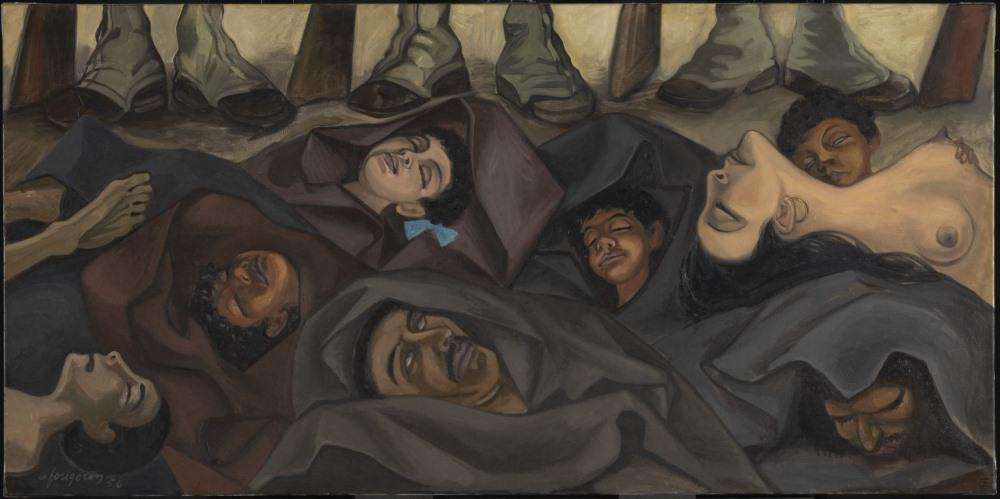
Final Thoughts
There are many artists now who produce fantastic oil paintings, but many are not and never will be famous. Doing a quick search for contemporary oil paintings on the internet will show you a list of work by many famous artists. However, search deeper, further down the search pages and you will find some fantastic work done by relatively unknown artists.
For more fascinating insights you could look at my article on the best drawings the art world has ever seen too!
Feel free to leave a comment if you have any questions or suggestions, thanks, Ian.
